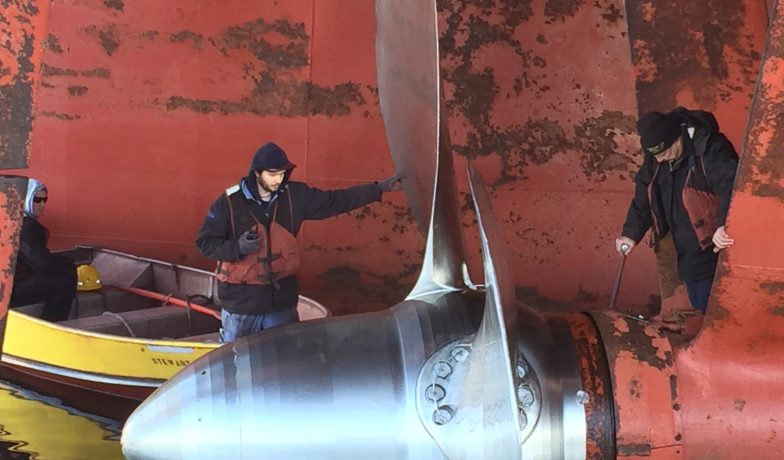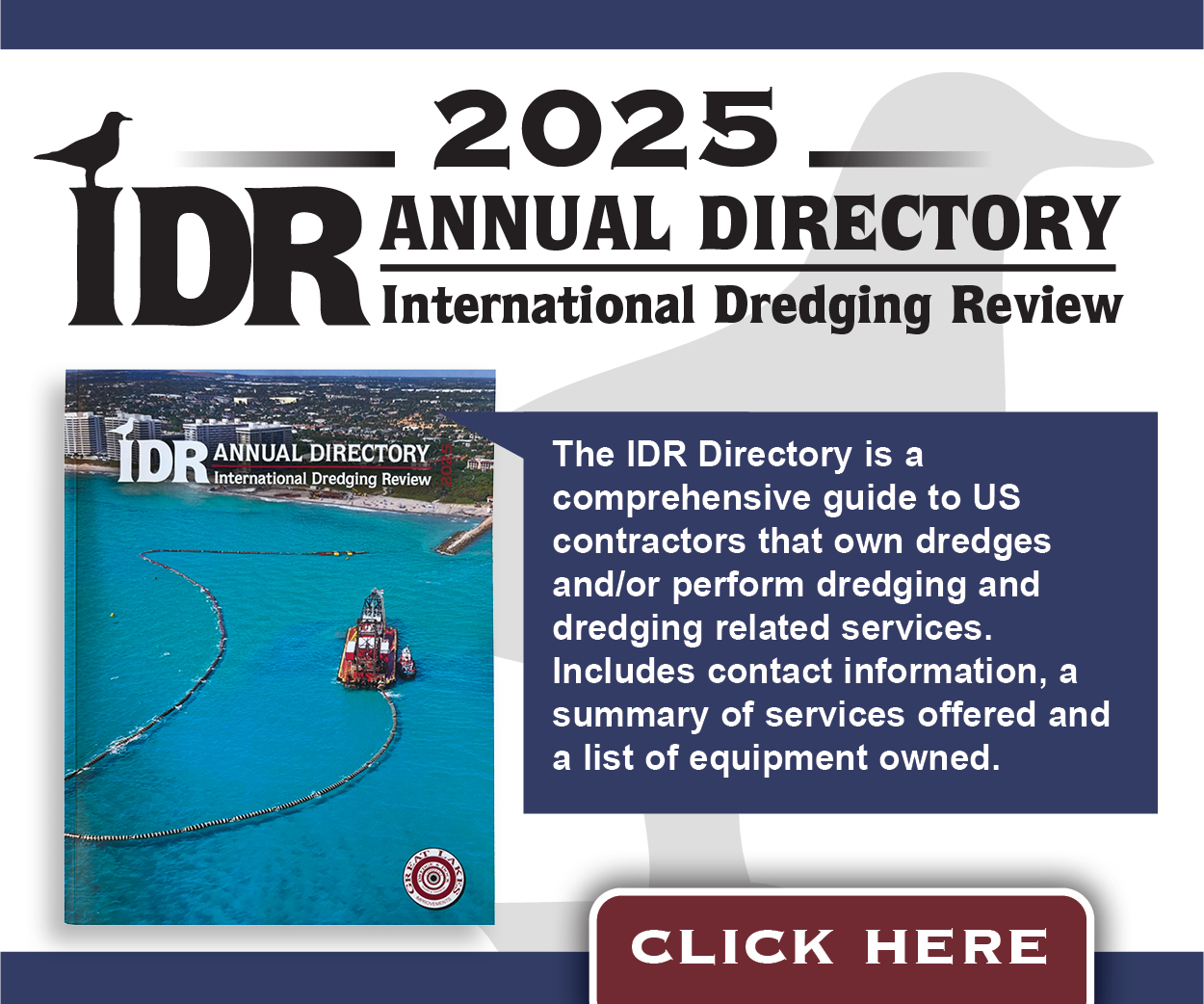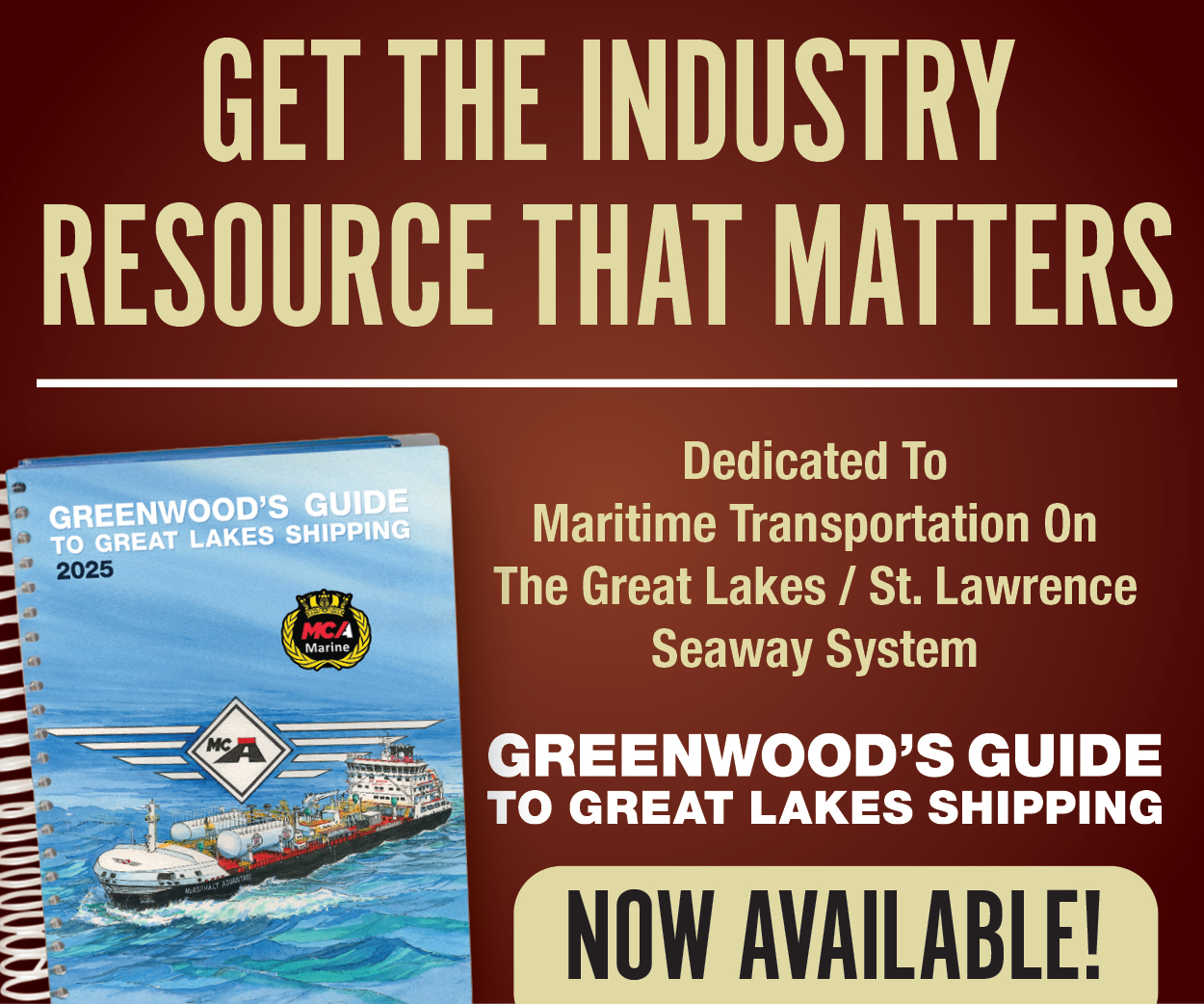Developing the Workforce of the Future
Workforce is one of four top 2025 “Economic Imperatives” cited by the Chamber of Marine Commerce in February. The Economic Imperatives are a select list of issues deserving, in the chamber’s opinion, the direct attention of the government of Canada.
The chamber notes that 43% of the marine workforce in Canada is expected to retire in the next decade, opening an estimated 19,000 jobs on board Canadian vessels. This challenge will directly impact Canada’s economic strength and long-term competitiveness, according to the chamber.
“Economic strength is shaped by many factors,” the chamber stated, “but one of the most important is the availability of human resources, and through marine workforce development, Canada would gain long-term competitive advantage.”
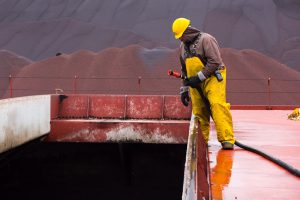
It’s important to keep in mind that these employment issues refer to the “waterborne trades,” such as working on vessels. A separate, but related issue, is workforce development for shipyards and vessel construction.
In a 2024 survey by the Associated General Contractors of America, 30% of companies were optimistic about new work in transportation markets and from federal agencies. But the contractors mentioned two top concerns: workforce shortages and higher interest rates. For workforce, the contractors suggested efforts quite familiar to maritime officials: increase resources for education and training; connect with local school districts; and make it easier for foreign workers to get on the payroll.
Competitive Jobs
Ronald O’Rourke is a specialist in naval affairs for the Congressional Research Service (CRS). In May 2024, he presented a report to the Committee on Homeland Security. His primary focus was on the Coast Guard’s acquisitions process, in this case for icebreakers, but his comments extend to broader challenges.
O’Rourke reported that between 2019 and 2024, estimated icebreaker costs increased by 39%, from $925 million to about $1.3 billion each. He listed five underlying factors, two directly linked to workforce: low wages and shipyard worker productivity.
O’Rourke’s testimony cites reporting from Politico Pro that salaries in fast food restaurants are competitive with shipyard wages. Perhaps fast food does not pay quite as much, but the work is far less demanding and largely without physical dangers. O’Rourke suggests shipyards may need to “reestablish a larger differential in wages and benefits between shipbuilding jobs and service and retail jobs.”
Those comments force a new look at a basic tenet: that maritime jobs pay well and offer a career ladder. A need to ratchet up maritime and shipyard salaries opens another debate about budgets and financing and uncomfortable discussions of affordability and industry competitiveness and maybe expanded government subsidies.
Scaling Up
Workforce experts were asked about scaling up maritime workforce development, going from a singular setting of, say, 30 students to 100 or 150 or even 1,000 to 1,500. How does that get done?
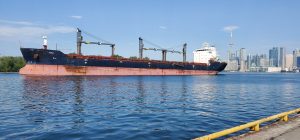
Kelly McDonald is senior director, human resources at PortsToronto. The port itself employs a range of workers, from deckhands to marine engineers to mates and captains to the Harbour Master. McDonald said that PortsToronto’s location makes it hard to attract maritime workers because the city is not known for maritime opportunities. The port partners with Georgian College to promote maritime careers.
“Scaling up would require a holistic and coordinated approach across the industry, including all interested parties, private and government sectors, all levels of educational institutions, unions and the communities,” McDonald said. “This would build a sustainable pipeline of skilled workers. As an industry, we need to work on incentivizing and supporting underrepresented groups as the maritime industry is currently underrepresented by women and Indigenous Peoples.”
Eric R. Dawicki, president of Northeast Maritime Institute College of Maritime Science in Fairhaven, Massachusetts, said that to scale up from 100 to 1,000 students would require coordination, vision and policy alignment. He seeks a commitment to big moves and suggests several initiatives.
- Clear signals from industry and government to convey that maritime careers are strategically important and affirm long-term employee demand
- Investing in new “access points,” especially beyond coastal cities and taking advantage of innovative institutions
- Modernizing financial aid and apprenticeship models
- Modernizing education policy to recognize alternative educational pathways
“Scaling maritime education isn’t only about infrastructure; it’s about ecosystem development,” Dawicki said. “Various schools have blueprints for change, but to realize full potential requires a concerted effort among all players. Collaboration is key but has been the one missing link for decades.”
Active Leadership
In Canada, the Canadian Marine Careers Foundation (CMCF) is a trade association that includes public and private sector marine stakeholders. It serves as a one-stop maritime career-employment resource center. It supports the Imagine Marine website and outreach programs. Its leadership includes Canada’s premier maritime companies as well as the Royal Navy and Transport Canada.
Julia Fields, the executive director of CMCF, and her team utilize digital engagement and in-person outreach to connect with potential maritime employees. Fields said the CMCF web portal is a central hub for information on marine careers, training programs, career pathways and industry updates. The Imagine Marine job board, launched in summer 2023, has surpassed 250,000 views. The foundation uses targeted digital advertising on Facebook and LinkedIn to drive web traffic to the resources people need to link up with maritime opportunities.
Additionally, old-school engagement is important. Fields said the “Marine Month in Canada” initiative engaged more than 2,000 students in 100 classes across the country last year, and it will repeat this October. CMCF facilitated industry outreach at the Gathering Our Voices indigenous youth conference in British Columbia.
Another high-profile initiative is the Imagine Marine Conference, held in October in Ottawa. This year’s theme is “Solutions & Actions: Building Our Future Marine Workforce.” Last year, the conference had more than 165 participants, making it a key forum to advance new programs and address labor and skills shortages.
Holistic and Coordinated
It’s too early to tell, but President Trump’s April 9 Executive Order 14269, “Restoring America’s Maritime Dominance,” could kick-start a new discussion about maritime workforce, which has been called for by many industry leaders. At a minimum, the executive order will move the workforce discussion to the highest levels. Then, there follows another critical opportunity: the chance to get all of the workforce players pulling as a team.
The executive order sets specific demands. It directs six cabinet agencies – State, Defense, Labor, Transportation, Education and Homeland Security – to present a report, within 90 days, addressing “workforce challenges in the maritime sector through maritime educational institutions and workforce transitions.” As needed, these agencies are to consult with “industry stakeholders, including private industry and labor organizations.”
The report is to cover a series of initiatives.
- Current workforce estimates and an estimate of how that workforce needs to grow to cover the broad maritime expansion at the heart of the president’s executive order
- Present requirements to expand and create new merchant marine academies
- Identify outdated and burdensome credentialing requirements and provide recommendations for reform
- Inventory existing schools and training programs and provide recommendations for enhancement
- Assess U.S. Coast Guard credentialing for sailors to move to the merchant fleet
The team working on this must then develop a legislative proposal reflecting “the recommendations of the report.” This proposal must address scholarships, “innovative maritime logistics, clean fuels and advanced nuclear energy, human-machine teaming and additive manufacturing and other advanced technologies” – all critical topics within the workforce debate. This report was due July 8.
Another federal initiative that will impact the maritime workforce is the Icebreaker Collaboration Effort, also known as ICE Pact. The United States, Canada and Finland signed a memorandum of understanding (MOU) last November. The United States formed the ICE Pact to strengthen the U.S. Coast Guard and accelerate icebreaker shipbuilding for the three countries. The most recent meeting of the parties was in May, in Canada.
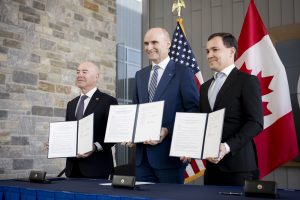
Like EO 14269, the ICE Pact MOU specifically references workforce development, requiring collaboration with “participating shipyards and partner networks.” It also includes “relevant governmental entities” who will facilitate the international exchange of personnel for training and workforce development purposes and to share information on workforce development programs and exchange designated technical advisers. Organized labor will be an ICE Pact partner.
It seems likely that given the extensive set of issues in EO 14269 and its required legislative proposal and ICE Pact’s demands that some kind of core leadership or advisory group will emerge to direct this broad scope of work and its many interrelated parts.
Working on Workforce
Not surprisingly, workforce issues remain a top, daily priority among Great Lakes shipping and maritime companies. Many companies and organizations are addressing workforce challenges, including both recruitment and retention.
The CSL Group has been recognized as a top employer for young people for the third consecutive time. Canada’s Top Employers for Young People, which recognizes employers that offer Canada’s best workplaces, credits CSL’s initiatives to empower the development and growth of individuals in the early stages of their careers.
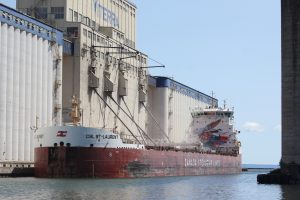
Stephanie Aubourg, chief human resources officer for CSL, said the company focuses on five benefits.
- Growth and development – CSL invests significantly in training and development
- Internal progression
- Culture and relationships – CSL wants employees to feel confident in working with peers and managers
- Generous and comprehensive benefits
- Best in class pension plans
Aubourg listed a number of top workforce challenges over the next three to five years. Finding enough employees will be difficult. She said when local talent is insufficient, CSL will recruit foreign employees with credentials recognized by Transport Canada. She noted these efforts require considerable resources and effort to ensure their capabilities. Some of the hardest positions to fill now are for second engineers, chief engineers, chief officers with pilotage certification and captains with pilotage certification.
She also mentioned that CSL is evaluating AI, and related tech applications might be helpful with workforce demands. “CSL is already pretty lean when it comes to workforce, but AI is changing the way we work,” Aubourg said. “For example, in data analysis and using that information to optimize vessel speed and maneuvers. Using AI represents a major mindset change in vessel operations and making daily decisions. We are in the process of fully embedding these new tools into our daily operations.”
Chrissy Kadleck, director of communications and employee engagement for Interlake Maritime Services, said licensed officer positions are the most difficult to fill right now. She added that COVID-19 is still impacting employment, worsening a shrinking labor pool. The company does have a waiting list of credentialed job seekers.
Kadleck also noted that work satisfaction goes beyond pay scale. She said Interlake focuses on opportunities for development and advancement, as well as flexible work schedules and a work-life balance. Promotion from within is a core policy.
Regarding recruitment, Kadleck said Interlake seeks to take every opportunity it can to participate in jobs fairs and events throughout the Great Lakes region and beyond. Interlake’s talent acquisition manager recently visited an elementary school class in Revere, Ohio, and the environmental stewardship manager presented virtually to a fifth-grade class in California. Kadleck also said the vice president of operations traveled to Massachusetts Maritime Academy for a recruiting event. “The traditional method of waiting for people to come to you as a model is quite challenged and frankly no longer works for us,” she explained.
Kadleck said referrals from mariners recommending the company are insufficient. “Today’s recruitment methods must be more specific and targeted and cast a wider net,” she said. “The methods of evaluation and selection must be smarter with the use of AI, scientific methods, behavioral-based methods and other creative endeavors to make sure we have the right person in the right seat aboard our 10 vessels and in our shoreside locations.”
Ryan Covert, director of recruiting for the Seafarers International Union (SIU) said all SIU’s classes are at capacity. He said the union’s recruiting efforts now prioritize sustainment and retention. They also seek to connect veterans and individuals who already have some maritime experience. “SIU is proud,” he said, “of the comprehensive recruiting program our team has put together in the face of industry-wide manpower challenges.”
SIU’s recruitment message highlights the unique lifestyle, generous benefits, upward mobility and guaranteed job placement within the maritime industry. “It is truly like none other,” Covert noted, “and that can be attractive for young folks entering the workforce.”
Covert said the SIU apprenticeship program is most popular for people new to the industry and takes about a year to complete. After 16 weeks of training, students work and progress to earn ratings as an oiler, able seaman or chief cook. SIU’s training methods include classroom sessions, simulators, practical assessments and hands-on work.
“Our focus,” Covert said, “is on creating the best trained and most professional mariners we can.”
Members of the Canadian Ferry Association (CFA) represent all the major ferry routes in Canada, operating 162 ferries and directly employing 9,000 people. Serge Buy, CEO of CFA, said workforce is a major concern. “Not enough people are entering the “pipeline” (educational institutions) to replace an aging workforce,” he said.
CFA works with educational institutions regarding new students. One good move, he said, would be to “upskill” some of the existing workforce. But that’s difficult if new training requires people to leave their current jobs. He said CFA would support a public program that helps with upskilling costs.
Buy added that, in some areas, housing is a challenge and keeps people from relocating. Additionally, CFA has asked for a comparative regulatory study to check operating requirements on Canadian ferries versus other countries. He noted anecdotal evidence that comparable ferry operations in Northern Europe require fewer crew members than in Canada while safety records are similar. He questioned why Canada requires more crew members.
Eric Peace, vice president of the Lake Carriers’ Association (LCA), said a top concern is the time it takes for a potential employee to obtain merchant mariner credentials. Peace referred to the forms as “overly complex” and said they dissuade young people from even applying. Then, he said, it can take months to finally get the credentials from the National Maritime Center. President Trump’s Executive Order 14269 seeks to identify outdated and burdensome credentialing requirements and provide recommendations for reform. The U.S. Coast Guard is also working on a process to speed up credentialing.
Peace said the occupations most in demand now include able-bodied seaman (AB), qualified members of the engineering department (QMED) and mates with First Class Pilotage. He said that AB’s and QMED’s “can be grown” but require time at sea for the credential. LCA companies often take extra personnel on board to allow sailors to gain time.
LCA supports recruiting events in Great Lakes high schools and works closely with the Great Lakes Maritime Academy to retain graduates who earn First Class Pilotage. Peace said Great Lakes is the only state academy that offers that credential. Finally, LCA works with the National Marine Sanctuary in Alpena and the Wisconsin Shipwreck Coast to educate youth on maritime opportunities.
The American Maritime Officers (AMO) is the largest union of U.S. merchant marine officers. AMO officers work aboard U.S.-flagged merchant and military sealift vessels.
AMO National President Capt. Willie Barrere said the union is concerned about a lack of skilled maritime workers. “For AMO, many of our members attended a maritime academy. For decades, there’s been a slight oversupply of officers coming out of the academies, and during that time, the academies have retooled to diversify their curriculums away from the traditional deck or engine license choices,” he said. “Some maritime academies have up to seven different degree options — only two of which are shipboard career tracks.”
Barrere said that over the last two decades, the U.S. maritime fleet has been relatively stable, but with the fleet growing, the issue of a worker shortage is exacerbated.
“The expansion, coupled with smaller graduating classes and many opting to stay ashore rather than go to sea, creates a perfect storm, which has led to a shortage of mariners that threatens our economic and national security,” he said.
AMO Great Lakes Representative Pete Kimsey said the union recognizes that a strong maritime workforce in the Great Lakes is essential for regional commerce and national security. “Great Lakes mariners move critical cargo directly supporting steel production, energy, agriculture, and construction across the country,” Kimsey said. “Many are longtime AMO members with years of experience navigating and maintaining vessels on the Lakes.”
The AMO agrees that bringing more people into the industry is essential. The most direct path to become a qualified officer licensed by the U.S. Coast Guard is to graduate from a maritime academy, which usually takes four years. There are six state maritime academies, including Great Lakes Maritime Academy, and one federal, the United States Merchant Marine Academy in Kings Point, New York.
A path through the unlicensed ranks takes a minimum of five to six years to be able to qualify for the U.S. Coast Guard license certification. Barrere said there is also a Military to Mariner path that is difficult and generates very few officers per year. To increase the number of engineers, the AMO started its own TECH program that can qualify a U.S. Coast Guard licensed STCW certified Third Assistant Engineer in approximately two and a half years. AMO’s STAR Center also offers an Officer in Charge of an Engineering Watch program, where tonnage engineers can obtain STCW certification faster than the typical route. “STAR Center also offers programs such as the Great Lakes Pilotage Prep course to our deep sea members to get endorsed for work in our Great Lakes fleet,” Barrere said. “We have many deep sea members who are trained and available to help when we face manning shortages on the Great Lakes.”
The AMO also believes it is important to set a foundation within the school system as early as possible. The union has teamed up with the American School Counselor Association to reach the 43,000 members of its organization. During the association’s annual conference this July in Long Beach, California, there will be dozens of booths promoting the various maritime career paths available, including all of the maritime academies.
Feature image courtesy of Interlake
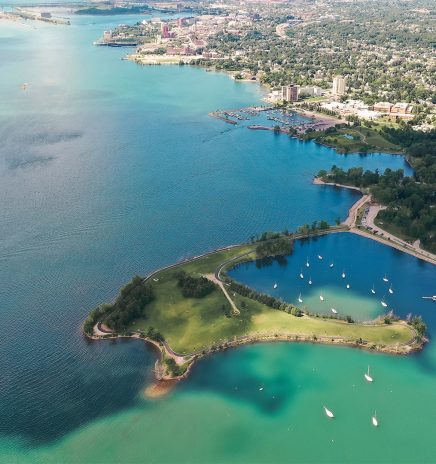
HOPA Ports Seeks to Build New Port at Sault Ste. Marie
In September, the Hamilton Oshawa Port Authority (HOPA) and the city of Sault Ste. Marie, Ontario, announced a partnership to develop a multimodal port and trade corridor connecting northern Ontario... Read More
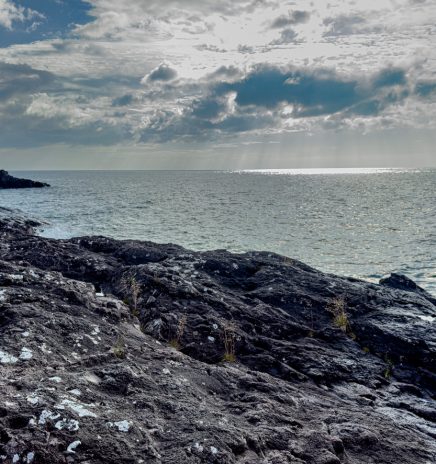
Alliance for the Great Lakes Addresses the Impact of Data Centers
The Alliance for the Great Lakes (AGL), a nonpartisan, nonprofit organization that works to protect, conserve and restore the Great Lakes, is investigating the impact of data centers and agricultural... Read More

